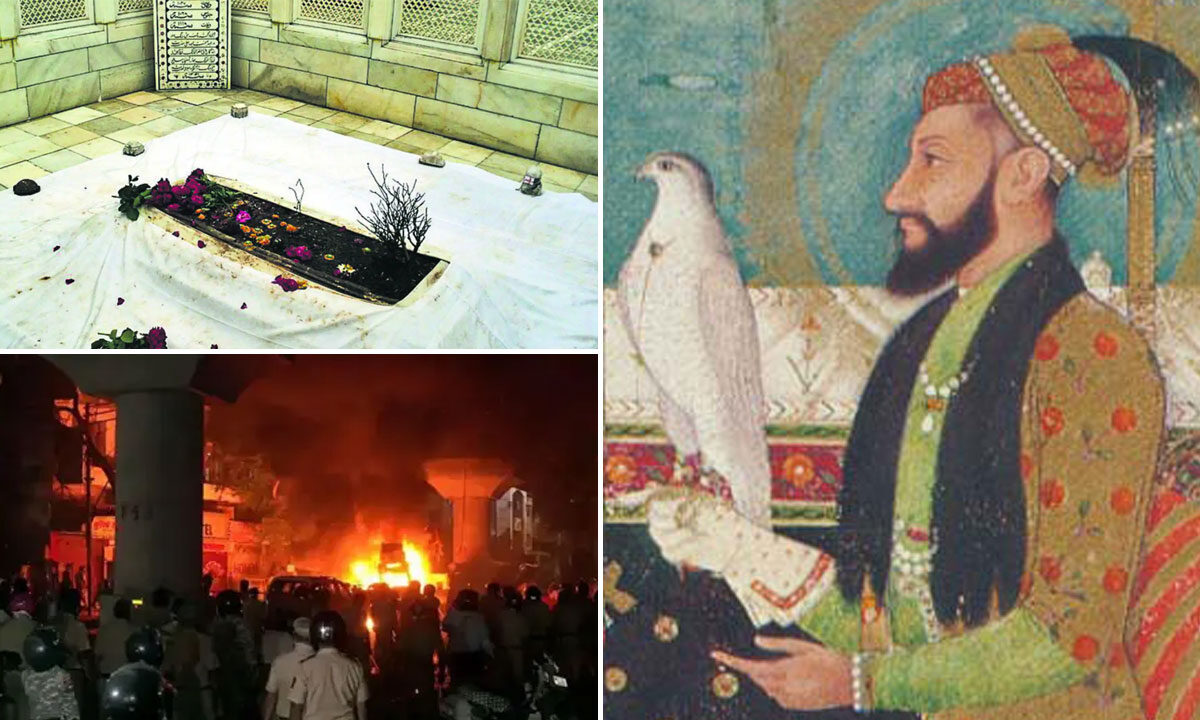Why Aurangzeb’s Centuries-Old Grave Is Sparking Fresh Communal Tensions in India
Sectarian clashes erupted in Nagpur, Maharashtra, as Hindu nationalist groups demanded the demolition of Mughal Emperor Aurangzeb’s tomb, leading to a violent confrontation between Hindu and Muslim communities.

New Delhi, India: Sectarian clashes erupted in Nagpur, Maharashtra, as Hindu nationalist groups demanded the demolition of Mughal Emperor Aurangzeb’s tomb, leading to a violent confrontation between Hindu and Muslim communities. The unrest has resulted in a curfew, arrests, and heightened police presence in the city.
Table of Contents
Fear Grips Residents Amid Violence
Datta Shirke, a local resident, has not stepped out of his house for two days, fearing for his family’s safety. Vehicles in his neighborhood have been set ablaze as clashes intensify. Meanwhile, Aslam, a Muslim resident, avoids returning home, fearing arbitrary arrests. “I have done nothing, but when the police come, their eyes seek our blood,” he lamented.
The unrest follows protests by the far-right Vishwa Hindu Parishad (VHP), which demanded the removal of Aurangzeb’s grave, branding it a “black spot” on Indian soil. The situation deteriorated after rumors spread that a green cloth with Quranic verses was burned during the protests, sparking a counterdemonstration by Muslim residents.
Also Read: Nagpur Communal Clashes: Local Leader Fahim Khan Arrested as Alleged Mastermind
Political Underpinnings of the Conflict
The violence comes ahead of Prime Minister Narendra Modi’s scheduled visit to Nagpur on March 30. The city, home to the Rashtriya Swayamsevak Sangh (RSS) headquarters, has become a flashpoint for communal tensions. Maharashtra’s Chief Minister, Devendra Fadnavis, suggested that a recent Bollywood film, Chhaava, which depicts Aurangzeb’s battles with the Marathas, may have fueled anti-Mughal sentiments.
VHP spokesperson Amit Bajpai defended the protests, stating, “It is our democratic right to demand what we feel is right.” However, lawyer Asif Qureshi criticized the police response, accusing them of arresting innocent Muslims while failing to take action against those inciting violence.
Who Was Aurangzeb?
Aurangzeb, one of the most powerful Mughal rulers (1658-1707), remains a deeply divisive figure in India’s historical and political discourse. While Hindu nationalist groups accuse him of temple destruction and religious persecution, historians argue that his reign was complex. Audrey Truschke, author of Aurangzeb: The Man and the Myth, notes that he was driven more by power than religious zeal. “Whenever piety and power conflicted, he chose power,” she stated.
His policies included imposing a discriminatory tax on Hindus but also granting land and funds to Hindu temples. His legacy remains contested, with nationalist groups pushing for the erasure of his historical presence.
The Broader Implications
Hindu nationalist groups have increasingly targeted Mughal-era monuments, including the Gyanvapi Mosque in Varanasi, claiming they were built on Hindu temple ruins. Modi himself has invoked Aurangzeb’s name in speeches, condemning his reign as one of “atrocities and terror.”
Aurangzeb’s tomb, legally protected under India’s Monuments of National Importance Act, now faces threats of desecration. With tensions mounting in Nagpur, fears persist that further violence could erupt.
“There is no trust or faith in each other anymore,” said Shirke, reflecting the deepening communal divide. As arrests continue, Muslim residents remain fearful of state action, while Hindu nationalist groups vow to intensify their demands.
Historian Truschke warns that using 17th-century history to justify modern-day violence is irrational. “Litigating what happened centuries ago is an insane idea,” she remarked. However, in the current political climate, Aurangzeb’s legacy continues to shape contemporary conflicts in India.
